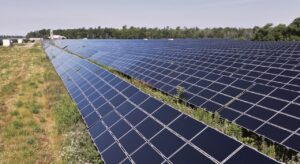Electricity consumption has increased dramatically over the past few decades. As consumers, we are consuming energy at an alarming rate, from air conditioning systems, heating systems, appliances, and all kinds of home entertainment devices to cloud computing, computers, and consumer electronics. Recently, the introduction of electric cars, although “green,” still needs to be powered, and that energy has to come from somewhere.
What are some of the new and emerging technologies for energy production and storage?
- Air Generator
Scientists at the University of Massachusetts have created a device that can generate electricity from water vapor naturally present in the atmosphere.
The device, called the Air-gen, goes back more than three decades. There, scientists discovered an unusual microbe belonging to the genus Geobacter, which, among other things, could produce magnetite (a good conductor of electricity) without oxygen.
- Microgrids and artificial intelligence
Microgrids are local energy networks that can operate freely or remain connected to a larger traditional grid. These networks not only save energy, but also provide energy independence, efficiency and protection during contingencies.
They typically range in capacity from 100 kilowatts (kW) to several megawatts (MW ). The City of Cape Town is currently researching the implementation of technologies such as microgrids to prevent intermittent power problems.
- Compressed Air Energy Storage Systems (CAES)
Compressed air energy storage (CAES) uses excess energy to compress air, which is then stored in an underground tank. Compressing the air generates heat. Of course, the goal, along with other forms of energy storage and other approaches such as smart grids, is to provide a means in which intermittent renewable energy can replace fossil fuels. - Powerwalls.
The Tesla Energy Powerwall is a state-of-the-art home battery designed to store your clean energy, so you can use it anytime – at night or during a power outage. The Powerwall gives you the ability to store energy for later use and works with or without a solar panel, providing key security and financial benefits.
Each Powerwall system includes at least one Powerwall and a Tesla Backup Gateway that provides monitoring, metering and control of power consumption in the system. The Backup Gateway learns and adapts to your power needs over time, receives wireless updates like other Tesla products and can manage up to ten Powerwalls.
- Vertical Wind Turbines
Roadside vertical wind turbines capture the waves created by passing vehicles, energy that is not currently being used. These turbines apparently capture not only the wind created by fast-moving vehicles, but any wind that is there. They can be installed along the middle of the highway (and are therefore easy and cheap to get to).
Vertical wind turbines.
For example, if these turbines were installed along the Johannesburg-Bloemfontein highway at a moderate spacing of, say, 10 meters, the cost of all the turbines for the project would be about R1 billion. But this cost would be recouped in less than five years, when 325 MW would be generated for the power grid. That may not be enough to power the whole country from such a plant on the aforementioned track, but it is a substantial help.
- Betavoltaic – nuclear waste wastes nothing
Nuclear material is constantly decaying and emitting radioactive particles in the process. This is why extremely radioactive materials are so dangerous and why proper storage of nuclear waste is so important and expensive. Betavoltaic devices use waste particles produced by low-level radioactive materials to trap electrons and generate electricity. - Ultracapacitors
Ultracapacitors use an electrostatic field to quickly capture energy and then release it quickly when needed. Conventional batteries and advanced lithium-ion batteries based on chemical reactions cannot do this effectively because they are slow to charge and slow to discharge. When batteries are asked to charge and discharge quickly-which is the case in many applications today-they begin to fail and eventually need to be replaced.


